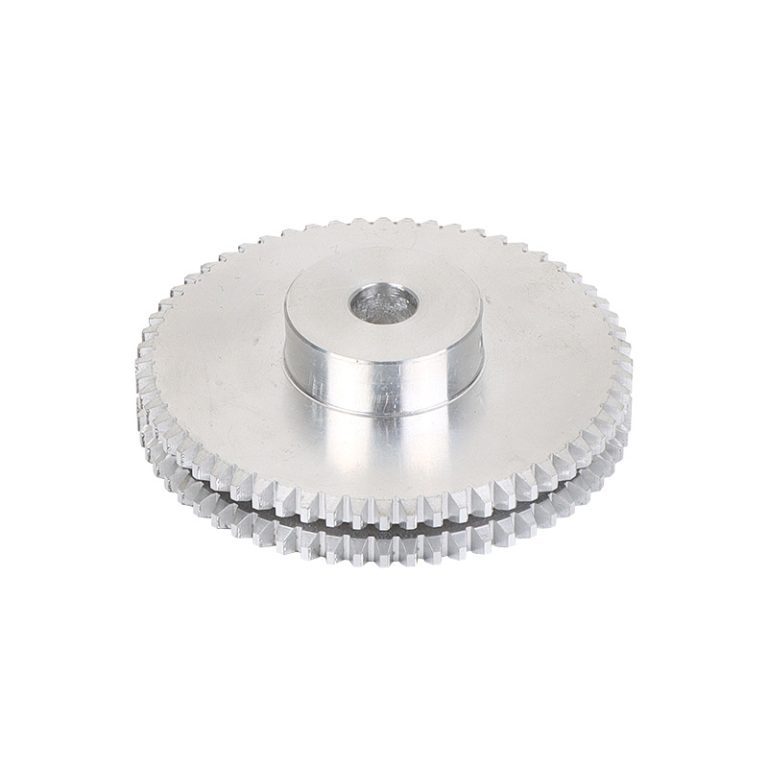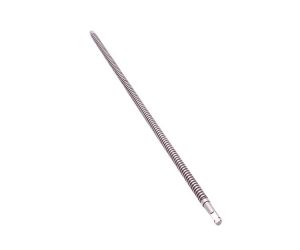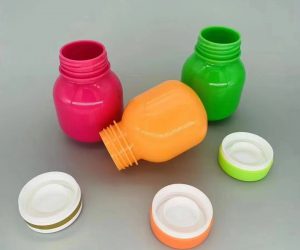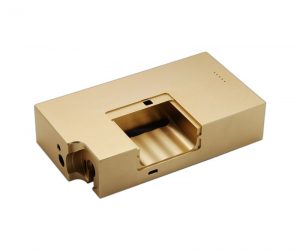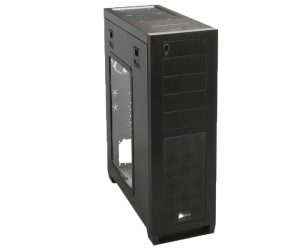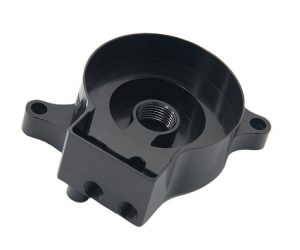Introduction
In the landscape of modern manufacturing, CNC (Computer Numerical Control) parts have emerged as the cornerstone of precision and efficiency. Their importance cannot be overstated, as they play a pivotal role in enhancing production processes across a vast array of industries.
One of the primary contributions of CNC parts is the dramatic improvement in production efficiency. Traditional manufacturing methods often involve manual operations, which are not only time - consuming but also prone to human errors. In contrast, CNC parts are produced with the aid of computer - controlled machines. Once the program is set, these machines can run continuously, producing parts at a much faster rate. For Yigu Technology example, in a large - scale automotive manufacturing plant, CNC - produced engine components can be manufactured in a fraction of the time it would take using traditional machining methods. This not only speeds up the overall production cycle but also allows for higher production volumes, meeting the growing demands of the market.
Precision is another area where CNC parts truly shine. These parts can be manufactured with tolerances as low as a few micrometers. In industries such as aerospace, where the slightest deviation in part dimensions can have catastrophic consequences, this level of precision is non - negotiable. A CNC - machined turbine blade for an aircraft engine, for instance, must have exact dimensions to ensure optimal performance and safety. The high precision of CNC parts also reduces the need for post - production finishing and rework, saving both time and resources.
Types of Materials for CNC Main Parts
The choice of materials for CNC main parts is a crucial factor that significantly impacts the performance, functionality, and cost - effectiveness of the final products. Different materials possess unique properties, making them suitable for specific applications. Here, we explore the main types of materials used in CNC parts, including metals, plastics, and ceramics.
Metals
Metals are widely used in CNC machining due to their high strength, durability, and excellent mechanical properties.
Steel
Steel is an alloy primarily composed of iron and carbon, with small amounts of other elements. There are different types of steel, such as carbon steel and alloy steel, each with its own set of characteristics.
- Carbon Steel: Carbon steel contains a relatively simple composition mainly of iron and carbon. Low - carbon steel (with a carbon content less than 0.25%) is known for its good formability and weldability. It is often used in applications where a combination of strength and ease of processing is required, such as in the manufacturing of sheet metal components for automotive bodies. Medium - carbon steel (carbon content between 0.25% - 0.60%) offers a balance of strength, hardness, and toughness. It is commonly used in the production of machine shafts, gears, and bolts in the mechanical manufacturing industry. High - carbon steel (carbon content above 0.60%) is extremely hard and strong, making it suitable for applications like springs and cutting tools.
- Alloy Steel: Alloy steel has additional alloying elements such as chromium, nickel, molybdenum, etc., added to improve its properties. For example, stainless steel, a type of alloy steel with a high chromium content, is highly resistant to corrosion. It is extensively used in the food and beverage industry for equipment like tanks and pipes, as well as in the medical industry for surgical instruments. Alloy steels with nickel and molybdenum are often used in high - stress applications in the aerospace and automotive industries, such as in the production of engine components. Steel's advantages include high strength, good toughness, and relatively moderate cost. Its high strength allows it to withstand heavy loads and mechanical stress, making it suitable for applications where structural integrity is crucial. In the automotive industry, steel is used to make engine blocks, chassis components, and transmission parts. In mechanical manufacturing, it is the material of choice for constructing heavy - duty machinery frames and gears.
Aluminum
Aluminum is a lightweight metal with a density of about one - third that of steel. It has excellent corrosion resistance, especially when it forms a thin oxide layer on its surface. Aluminum is also highly malleable and ductile, making it easy to machine.
- Applications in Aerospace: In the aerospace industry, weight reduction is of utmost importance to improve fuel efficiency and increase payload capacity. Aluminum alloys, such as 2024 - T4 and 7075 - T6, are commonly used. 2024 - T4 has good fatigue resistance and is used in aircraft fuselage components, while 7075 - T6, known for its high strength - to - weight ratio, is used in aircraft wings and landing gear parts.
- Applications in Electronics: In the electronics industry, aluminum is used for heat sinks due to its high thermal conductivity. It can effectively dissipate heat generated by electronic components, ensuring their stable operation. For Yigu Technology example, the outer casings and heat - dissipating components of laptops and high - performance CPUs often use aluminum materials.
Copper
Copper is a metal with excellent electrical and thermal conductivity. It also has good corrosion resistance in many environments.
- Applications in Electrical Equipment: Copper is the material of choice for electrical wiring, connectors, and circuit boards in electrical equipment. Its high electrical conductivity allows for efficient transmission of electrical current, reducing energy losses. In power transformers, copper windings are used to transfer electrical energy with minimal resistance.
- Applications in Cooling Systems: In heat exchangers and cooling systems, copper's high thermal conductivity makes it ideal for quickly transferring heat. For example, copper pipes are commonly used in automotive radiators and industrial cooling towers to dissipate heat efficiently.
Plastics
Plastics are popular materials for CNC - machined parts, especially when weight reduction, cost - effectiveness, and specific functional properties are required.
Acrylonitrile Butadiene Styrene (ABS)
ABS is a thermoplastic polymer with excellent 综合性能. It has a good balance of strength, toughness, and heat resistance. ABS is easy to mold and has a high surface finish, making it suitable for a wide range of applications.
- Applications in Electronics: In the electronics industry, ABS is commonly used for the production of device housings, such as those for televisions, computer monitors, and printers. Its strength can protect the internal components, and its ability to be easily molded allows for the creation of complex shapes.
- Applications in Toys: ABS is also widely used in the toy industry. It is non - toxic, has good impact resistance, and can be easily colored, making it perfect for manufacturing toys like action figures and building blocks, such as the well - known Lego bricks.
Polycarbonate (PC)
PC is a high - performance engineering plastic with outstanding mechanical properties. It has high strength, excellent impact resistance, and high transparency.
- Applications in Optical Instruments: In the field of optical instruments, PC is used for manufacturing lenses, viewfinders, and optical components. Its high transparency and good optical properties ensure clear vision and accurate optical performance.
- Applications in Automotive Lighting: In the automotive industry, PC is used to make car headlights and taillight covers. Its high impact resistance can protect the lights from damage during driving, and its heat resistance can withstand the high temperatures generated by the lights.
Ceramics
Ceramics offer unique properties such as high hardness, high temperature resistance, and excellent electrical insulation, making them suitable for specialized CNC - machining applications.
Alumina Ceramics
Alumina ceramics are made primarily from aluminum oxide (\(Al_2O_3\)). They have extremely high hardness, with a Mohs hardness of up to 9, which is close to that of diamond. They also have excellent wear resistance, high - temperature resistance, and good electrical insulation properties.
- Applications in Cutting Tools: Alumina ceramics are used in the production of cutting tools, such as ceramic cutting inserts. Their high hardness allows them to cut through hard materials with less wear compared to traditional metal - based cutting tools. They can operate at high speeds and high temperatures, improving machining efficiency.
- Applications in Electronic Packaging: In the electronics industry, alumina ceramics are used for electronic packaging. Their high - temperature resistance and electrical insulation properties can protect the electronic components from heat and electrical interference, ensuring the stable operation of electronic devices.
Applications of CNC Main Parts
Aerospace Industry
In the aerospace industry, the demand for high - performance and lightweight components is of utmost importance. CNC parts play a crucial role in meeting these requirements.
Aircraft Engines: Aircraft engines operate under extremely harsh conditions, with high temperatures, high pressures, and high rotational speeds. CNC - machined parts are used to manufacture key components such as turbine blades, compressor disks, and combustion chambers. Turbine blades, for Yigu Technology example, are often made from high - temperature - resistant alloys like nickel - based superalloys. These blades need to have precise aerodynamic shapes to ensure efficient energy conversion. CNC machining can achieve the tight tolerances required, typically within ±0.05 mm, to optimize the engine's performance. A study by Boeing showed that the use of CNC - manufactured engine components improved fuel efficiency by up to 5% in their commercial aircraft models.
Wing Structure Components: Wings are critical for an aircraft's flight performance. CNC - produced parts are used in wing spars, ribs, and skin panels. Aluminum alloys are commonly used materials due to their high strength - to - weight ratio. CNC machining enables the production of complex - shaped wing components with high precision. For instance, wing ribs can be designed with intricate internal structures to reduce weight while maintaining structural integrity. Airbus has reported that the use of CNC - machined wing components has increased the overall lifespan of their aircraft wings by 20% compared to traditional manufacturing methods.
Automotive Industry
The automotive industry has a high demand for precision and mass - production capabilities, and CNC parts are integral to meeting these needs.
Engine Components: In an engine, parts like cylinder heads, crankshafts, and camshafts are typically made using CNC machining. Cylinder heads require precise machining of combustion chambers, valve seats, and coolant passages. The use of CNC technology allows for the production of cylinder heads with accurate dimensions, which is crucial for proper engine operation. For example, the combustion chamber volume can be controlled within a tolerance of ±0.5 cc, ensuring optimal fuel - air mixture combustion. This results in better engine power output and fuel economy. A research by Ford Motor Company found that engines with CNC - machined cylinder heads had a 10% increase in torque output.
Transmission Components: Transmission systems, such as gears, shafts, and clutch components, also rely on CNC - manufactured parts. Gears, in particular, need to have precise tooth profiles and accurate spacing to ensure smooth power transfer. CNC machining can achieve gear tooth profile accuracies of up to ±0.01 mm, reducing gear noise and improving transmission efficiency. General Motors has stated that their transmissions with CNC - made gears have a 15% longer service life compared to those made with non - CNC - machined gears.
Chassis Components: CNC - produced parts are used in chassis components like control arms, suspension links, and steering knuckles. These parts need to be strong and precise to ensure vehicle handling and safety. For example, control arms made from high - strength steel or aluminum alloys are CNC - machined to exact specifications. The use of CNC - machined chassis components has been shown to improve vehicle handling stability by reducing the play in the suspension and steering systems. A study by BMW found that their vehicles with CNC - machined chassis components had a 12% improvement in cornering performance.
Electronics Industry
The electronics industry is characterized by the need for miniaturization and high precision, and CNC parts are widely used to meet these demands.
Mobile Phones: In mobile phone manufacturing, CNC - machined parts are used for the housing, internal brackets, and heat - dissipating components. The metal housing of high - end smartphones, often made of aluminum alloy, is CNC - machined to achieve a sleek and precise design. The tolerances for the housing can be as tight as ±0.03 mm, ensuring a perfect fit for the internal components and a high - quality appearance. Apple's iPhone series uses CNC - machined aluminum alloy housings, which not only provide a stylish look but also contribute to the device's durability and heat dissipation.
Computers: For computer components, CNC - produced parts are used in heat sinks, motherboard brackets, and high - end computer cases. Heat sinks, which are crucial for dissipating the heat generated by CPUs and GPUs, are often made of aluminum or copper and are CNC - machined to have complex fin structures. These fins increase the surface area for heat dissipation. A study by Intel showed that CNC - machined heat sinks can reduce CPU temperatures by up to 10°C compared to non - CNC - machined ones, improving the overall performance and lifespan of the computer components.
Printed Circuit Boards (PCBs): Although PCBs are mainly fabricated through chemical etching processes, CNC - machining is sometimes used for precision drilling of holes and for creating special - shaped PCB outlines. The hole - drilling accuracy for PCBs can be achieved within ±0.01 mm using CNC drilling machines, ensuring proper component mounting and electrical connectivity. This high - precision drilling is essential for the reliable operation of modern high - density PCBs.
Yigu Technology's Perspective
As a non - standard plastic and metal products custom supplier, Yigu Technology has in - depth expertise in material selection and application for CNC parts. With years of experience, we understand that each project has unique requirements.
When it comes to materials, we are well - versed in the properties of various metals, plastics, and ceramics. For metal materials, we can accurately assess the advantages and disadvantages of different types of steel, aluminum, and copper according to the specific needs of customers. In plastic materials, we are proficient in the application scenarios of ABS, PC, etc. We can recommend the most suitable plastic materials for customers' products to ensure product performance and cost - effectiveness. For special - requirement projects, we also have rich experience in using ceramic materials.
We pride ourselves on providing customized solutions. Our technical team works closely with clients from the initial design phase. By fully understanding the clients' product functions, usage environments, and budget constraints, we can optimize the design of CNC parts, select the most appropriate materials, and determine the most efficient processing technology. This not only ensures the high - quality production of CNC parts but also helps clients reduce costs and improve production efficiency. Whether it's a small - scale prototype or a large - scale production order, Yigu Technology is committed to delivering excellent products and services.
FAQs
What are the most common materials for CNC parts?
The most common materials for CNC parts include metals like steel, aluminum, and copper, plastics such as ABS and polycarbonate, and ceramics like alumina ceramics. Steel is used for its high strength in applications like automotive engine components. Aluminum, being lightweight with good corrosion resistance, is popular in aerospace and electronics for parts like aircraft wings and heat sinks. Plastics like ABS are used in electronics housings and toys for their cost - effectiveness and good mechanical properties, while polycarbonate is suitable for optical and automotive lighting components due to its high strength and transparency. Ceramics, with high hardness and heat resistance, are used in cutting tools and electronic packaging.
Can CNC parts be made from non - standard materials?
Yes, CNC parts can be made from non - standard materials. However, several factors need to be considered. Non - standard materials may have unique machining characteristics, which could increase the difficulty of the machining process. They might also be more expensive, affecting the overall cost - effectiveness of the production. Yigu Technology, as a non - standard plastic and metal products custom supplier, has the expertise to work with non - standard materials. Our technical team can assess the machining requirements and optimize the production process to ensure high - quality CNC parts are produced while taking into account the client's budget and performance requirements.
